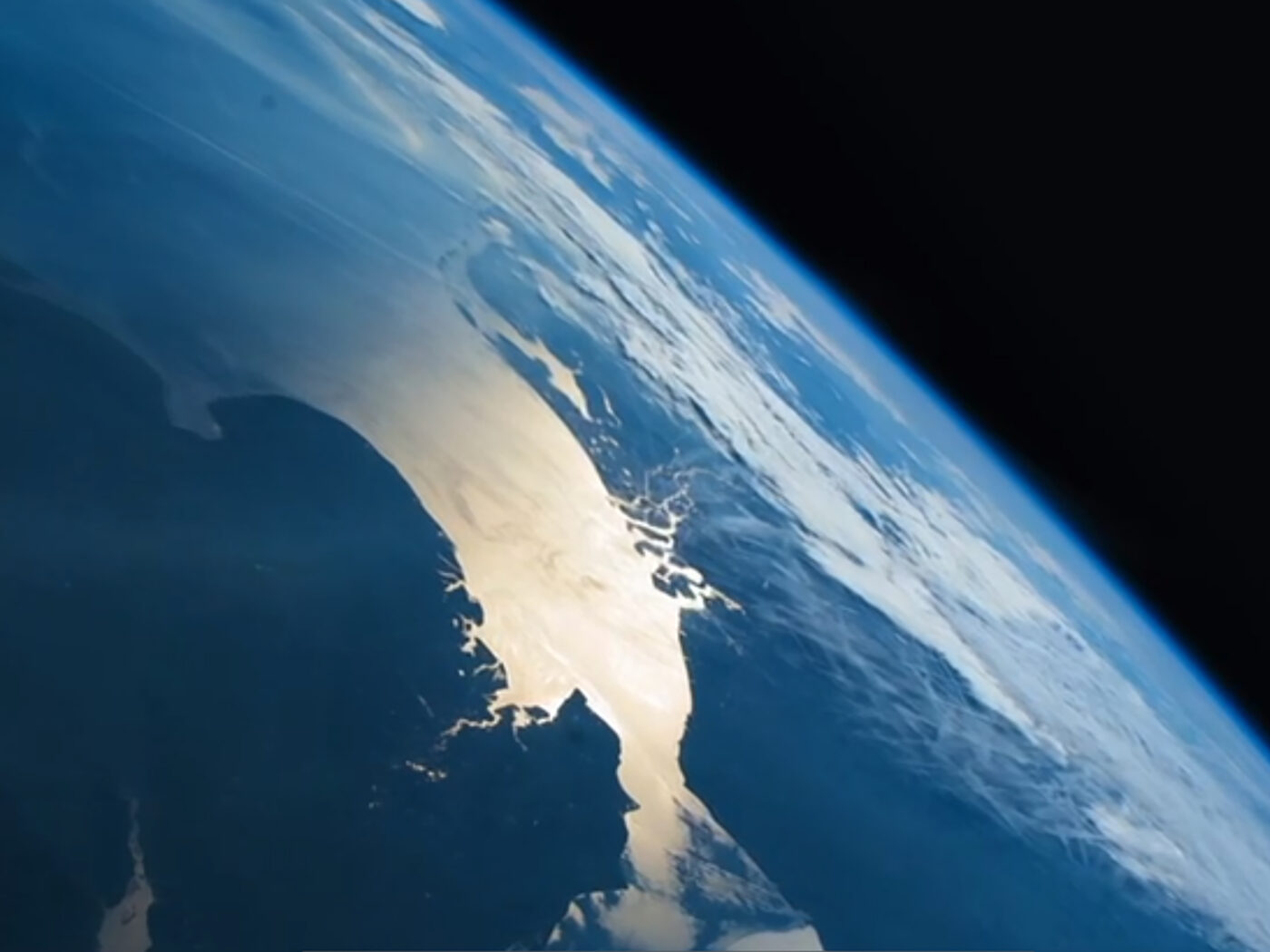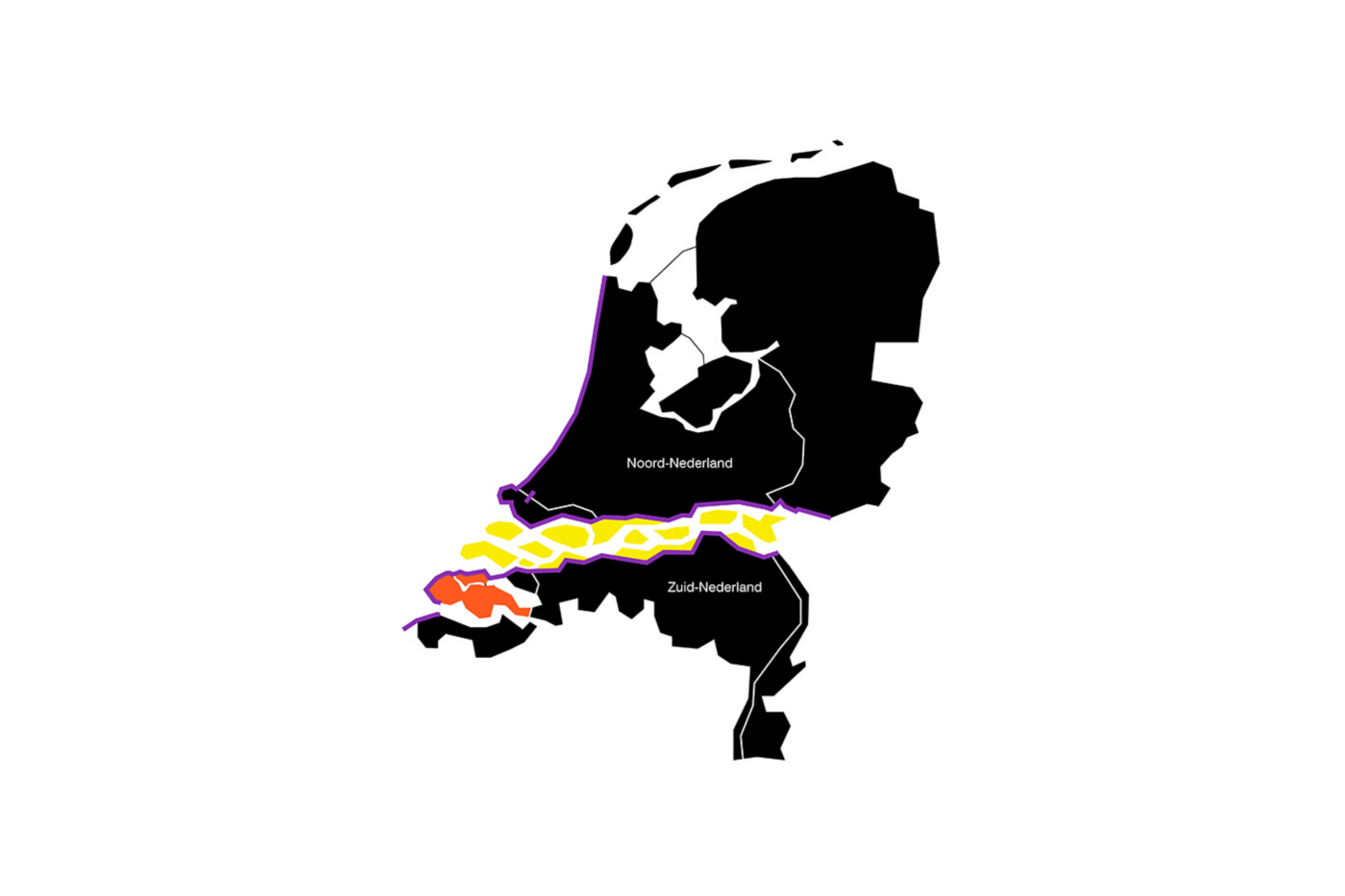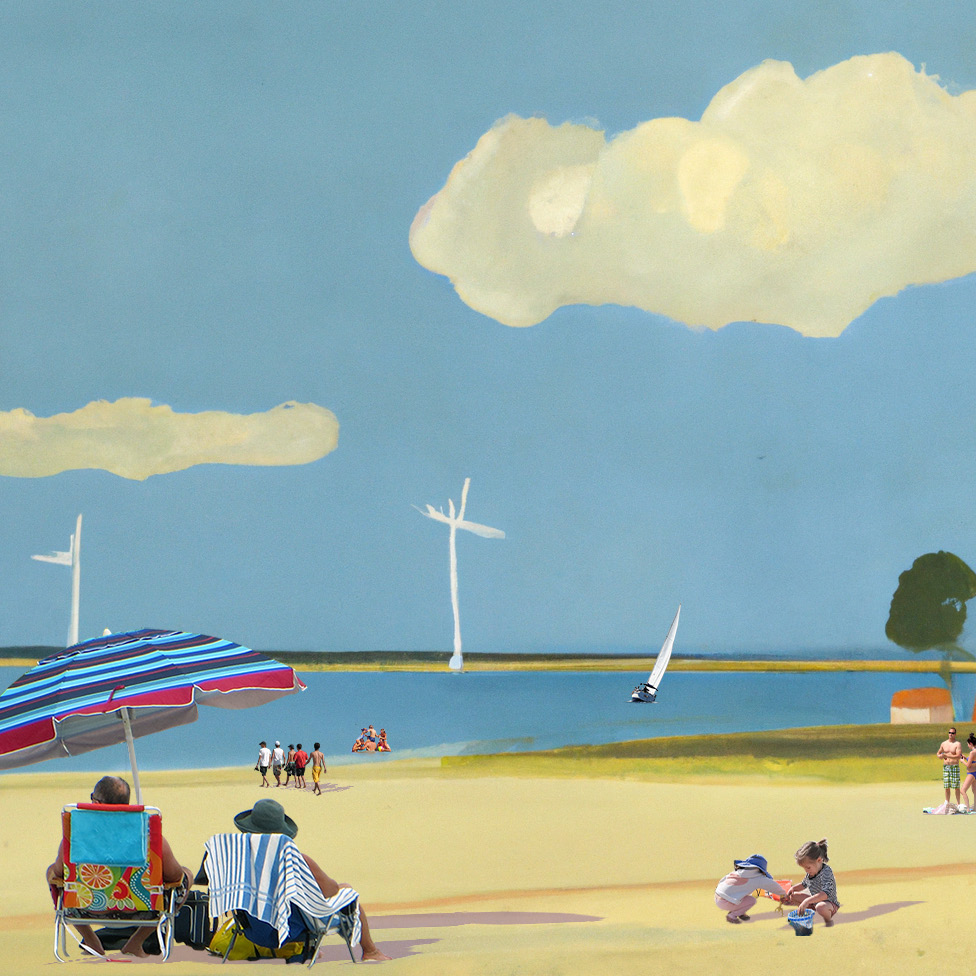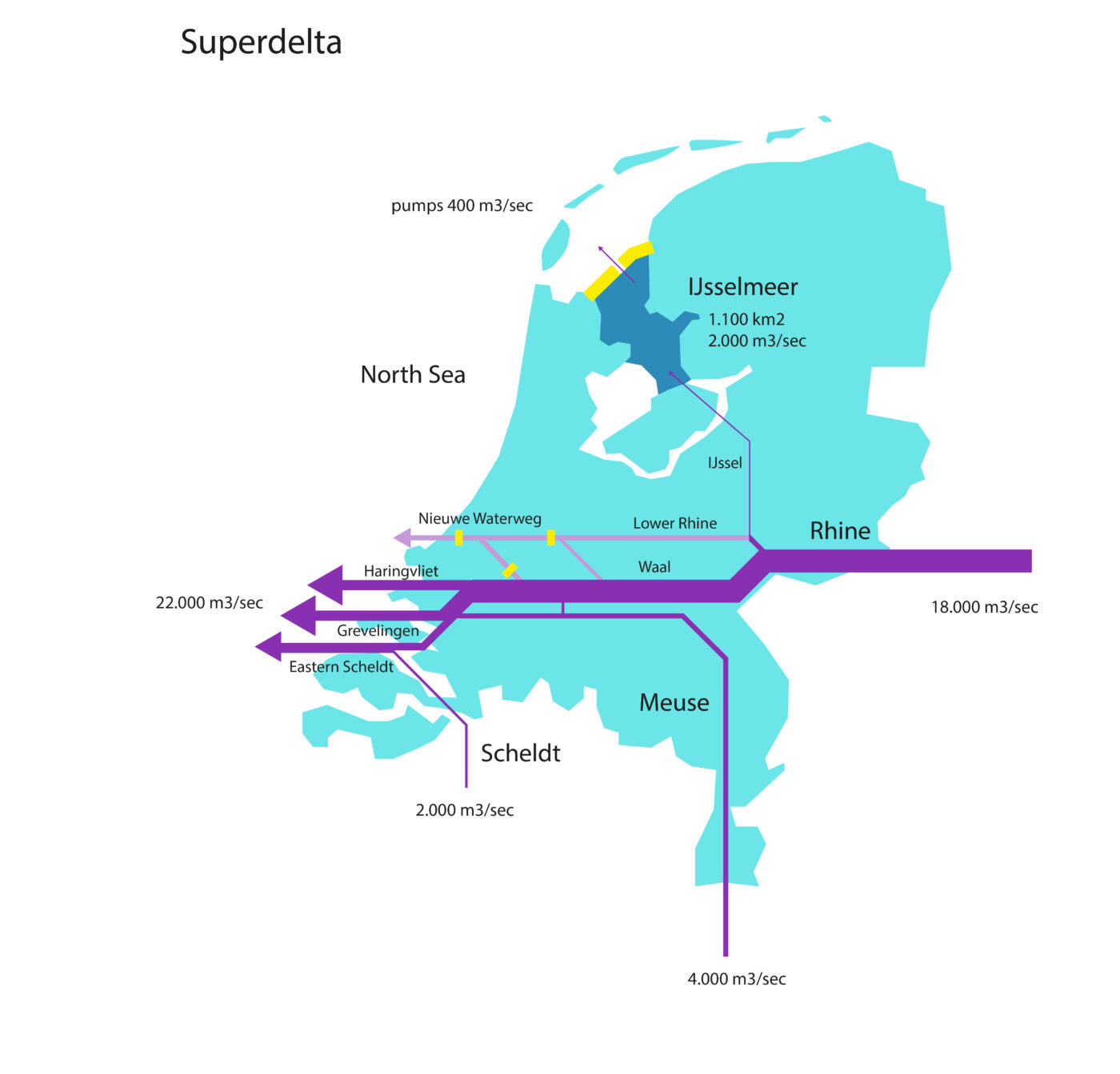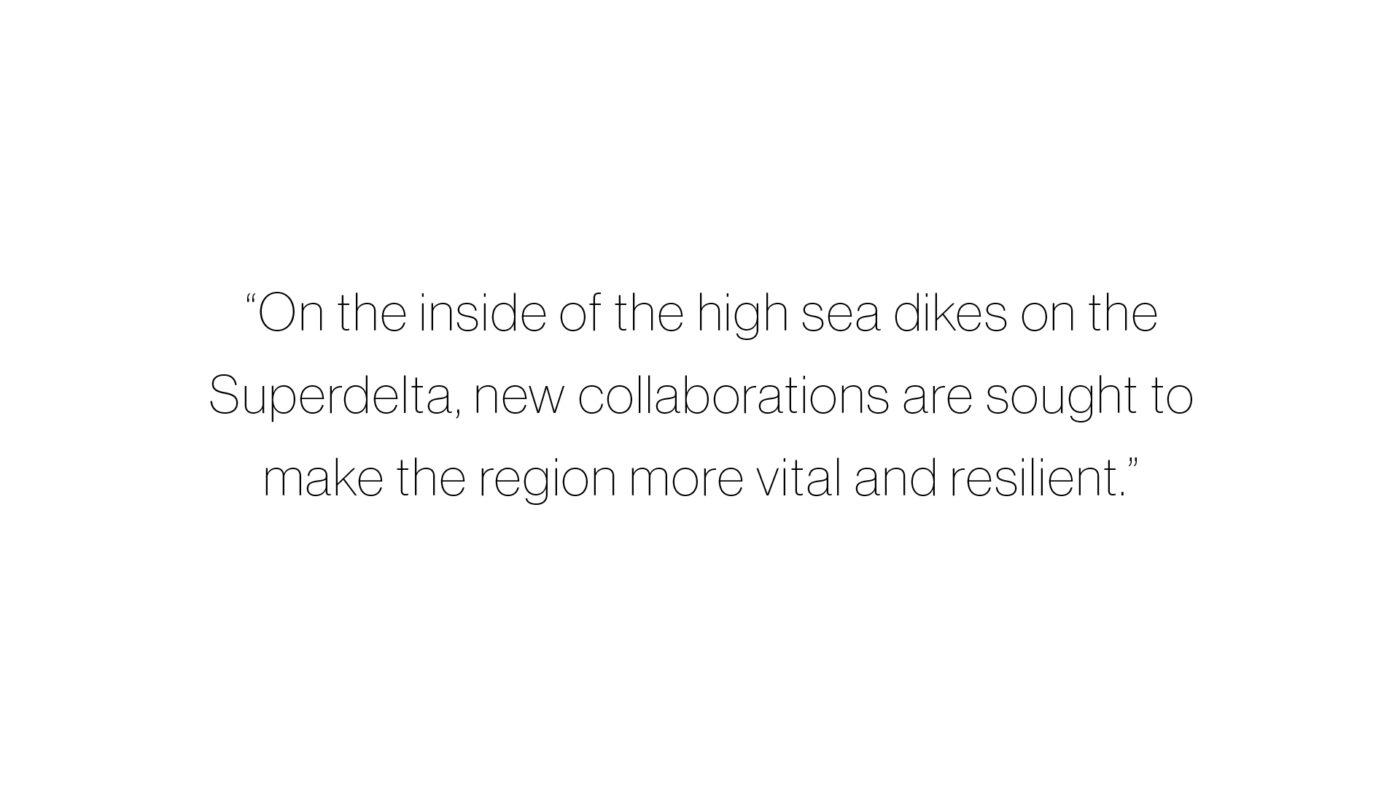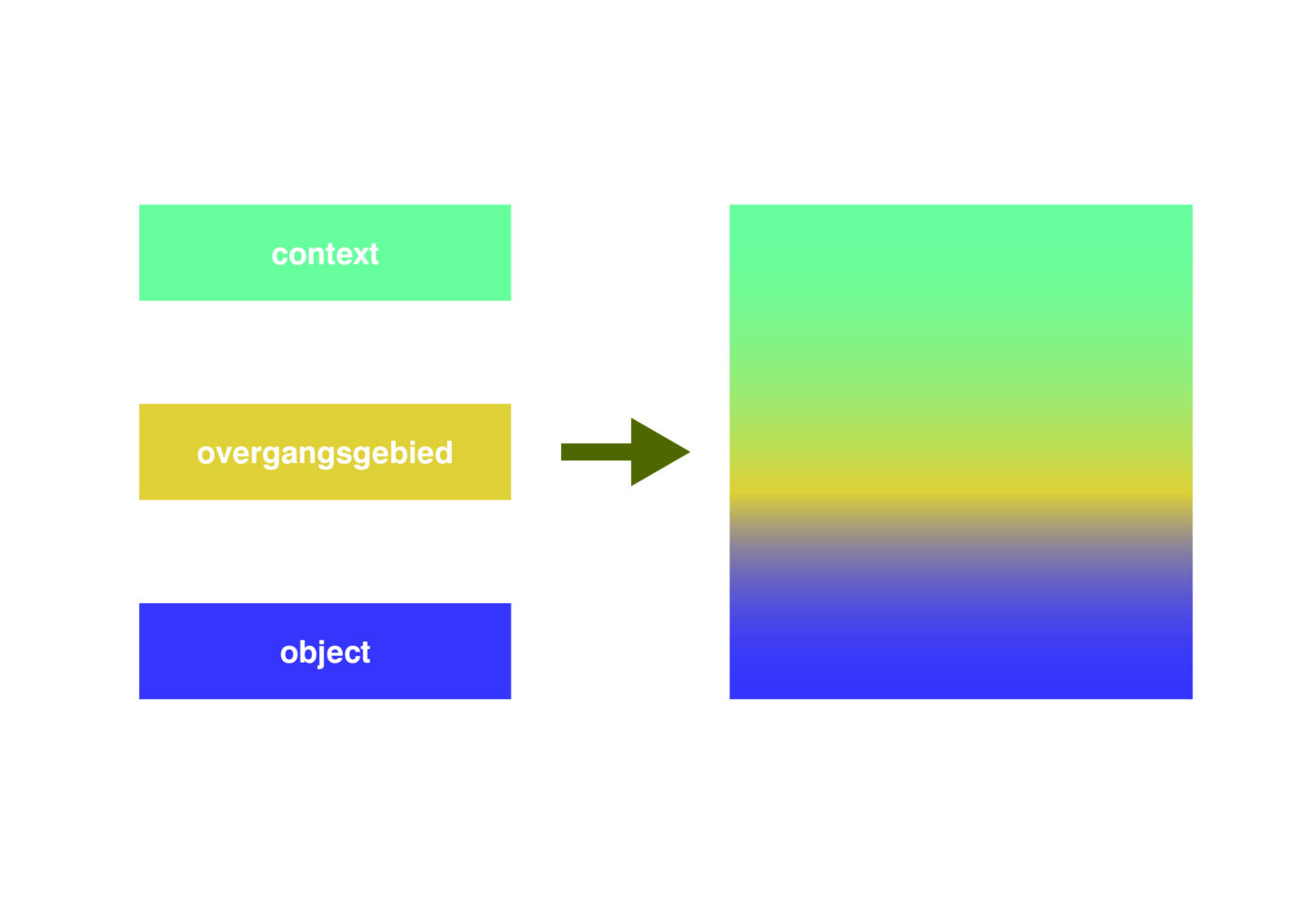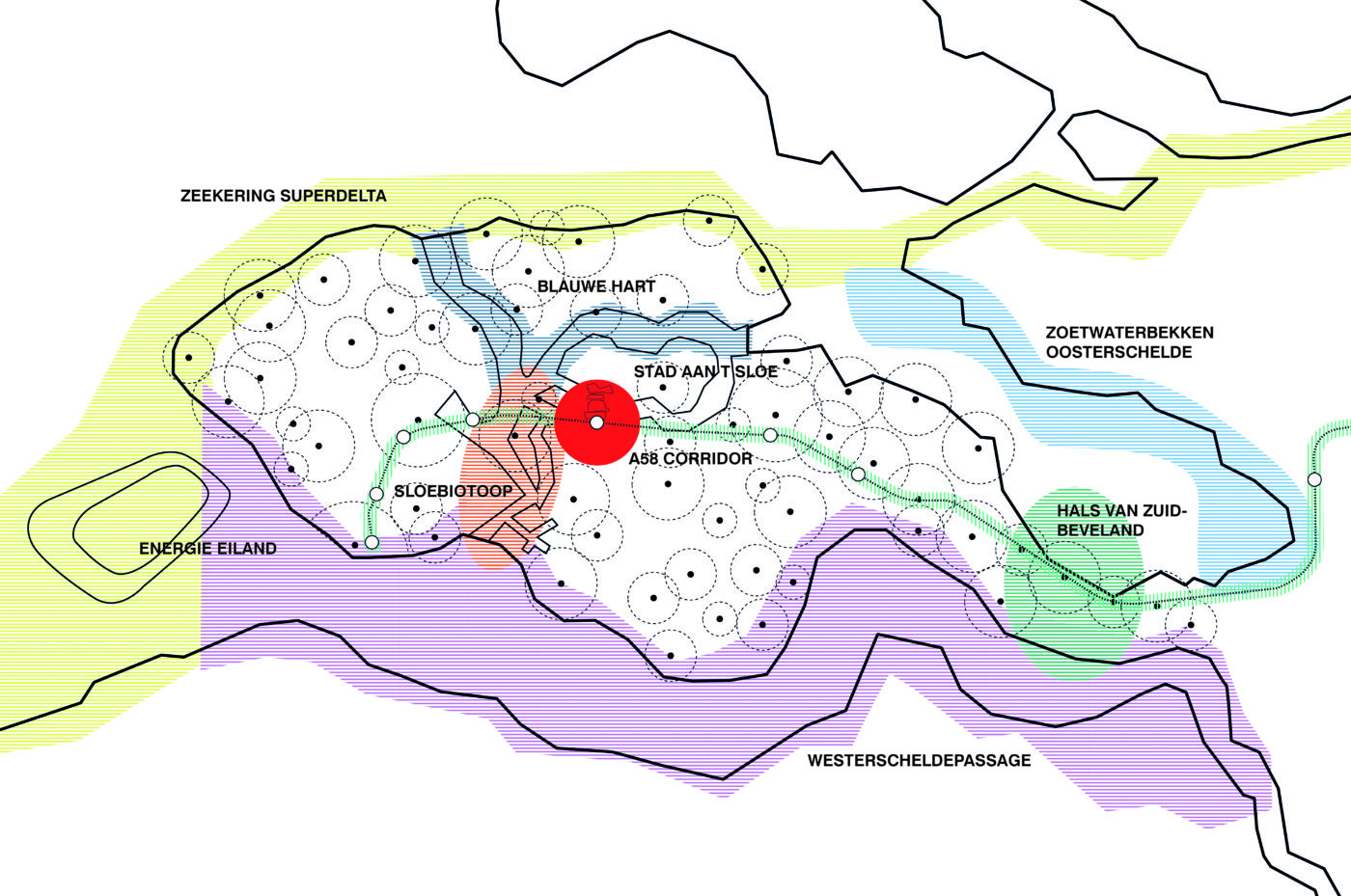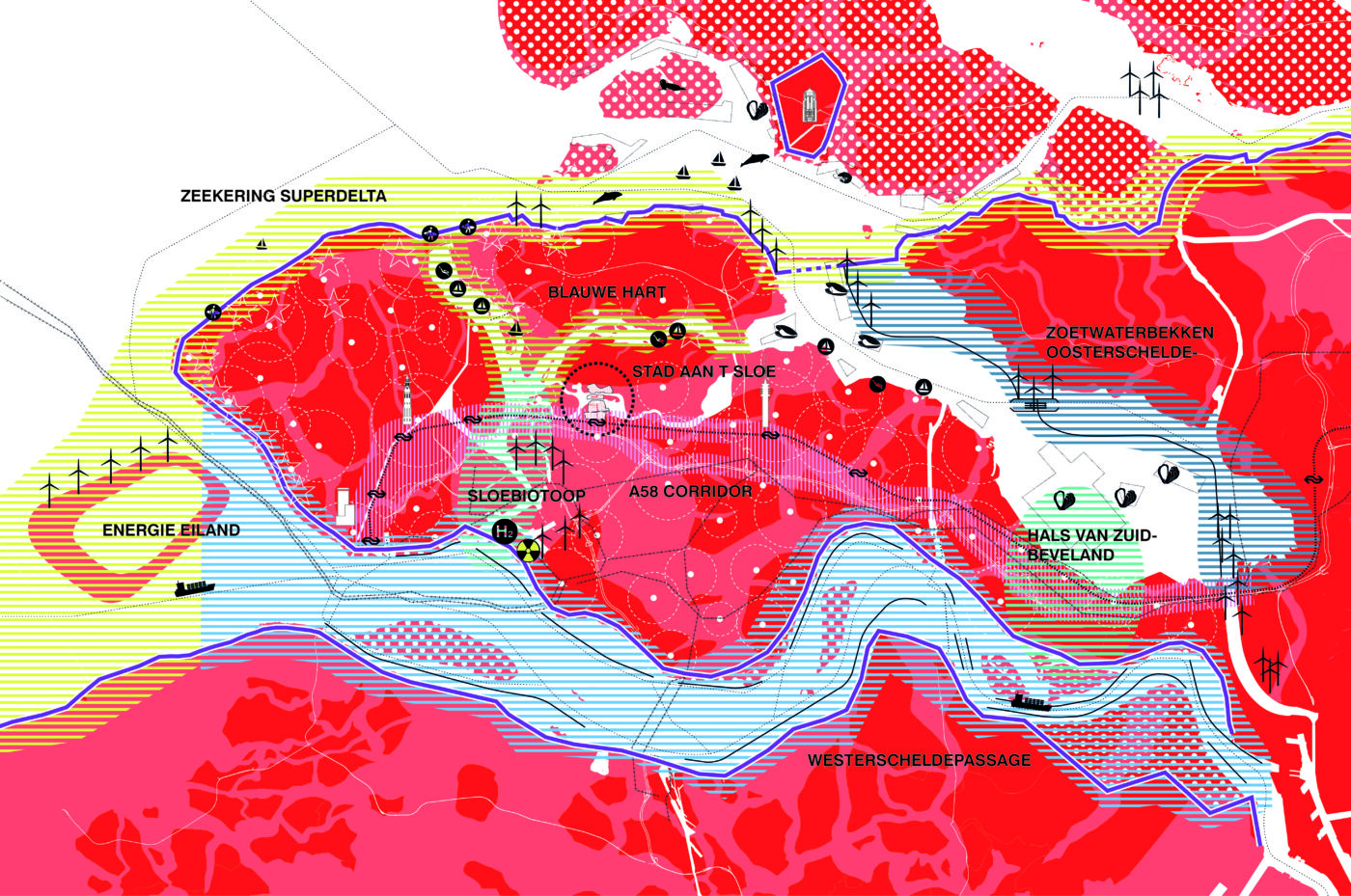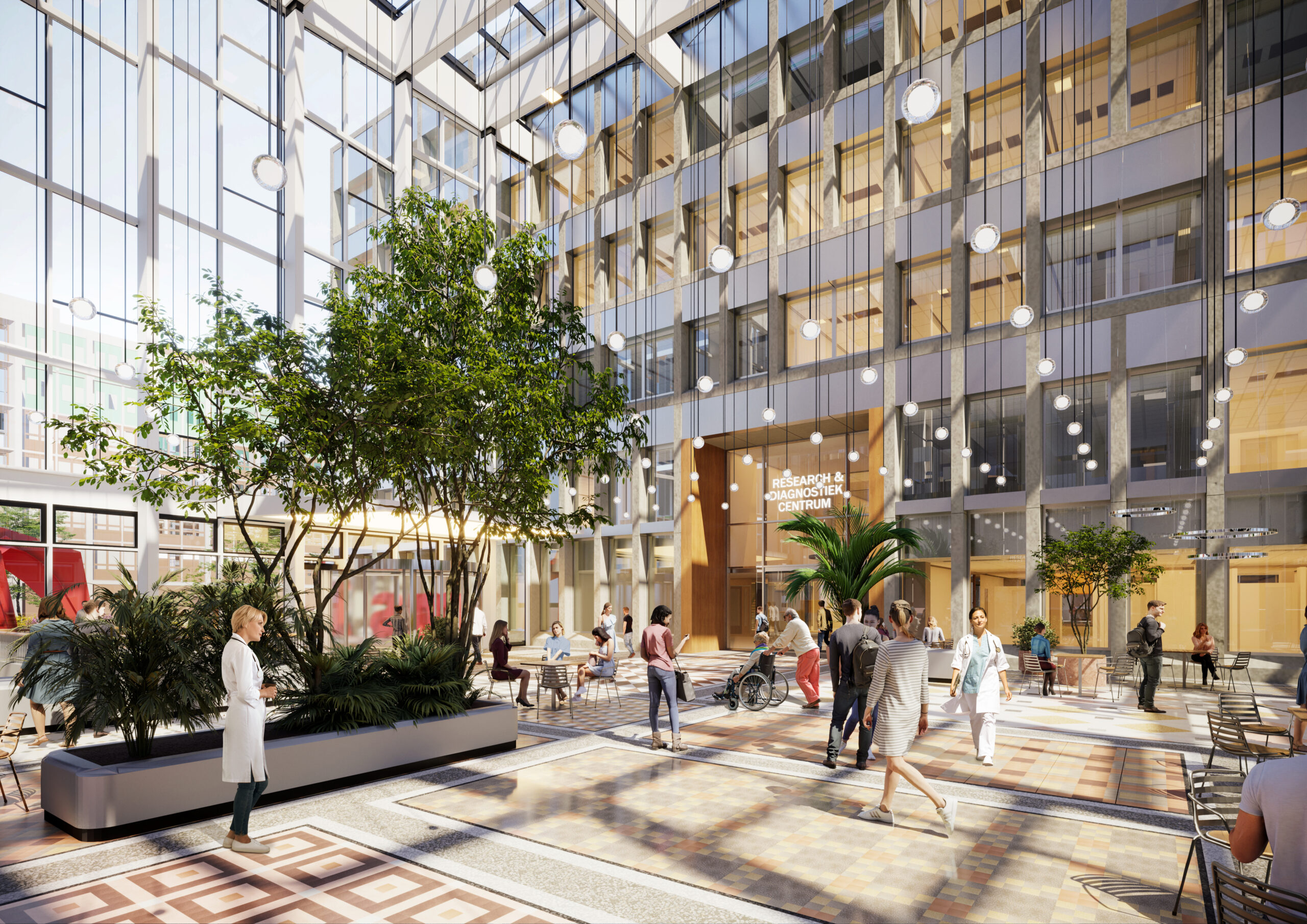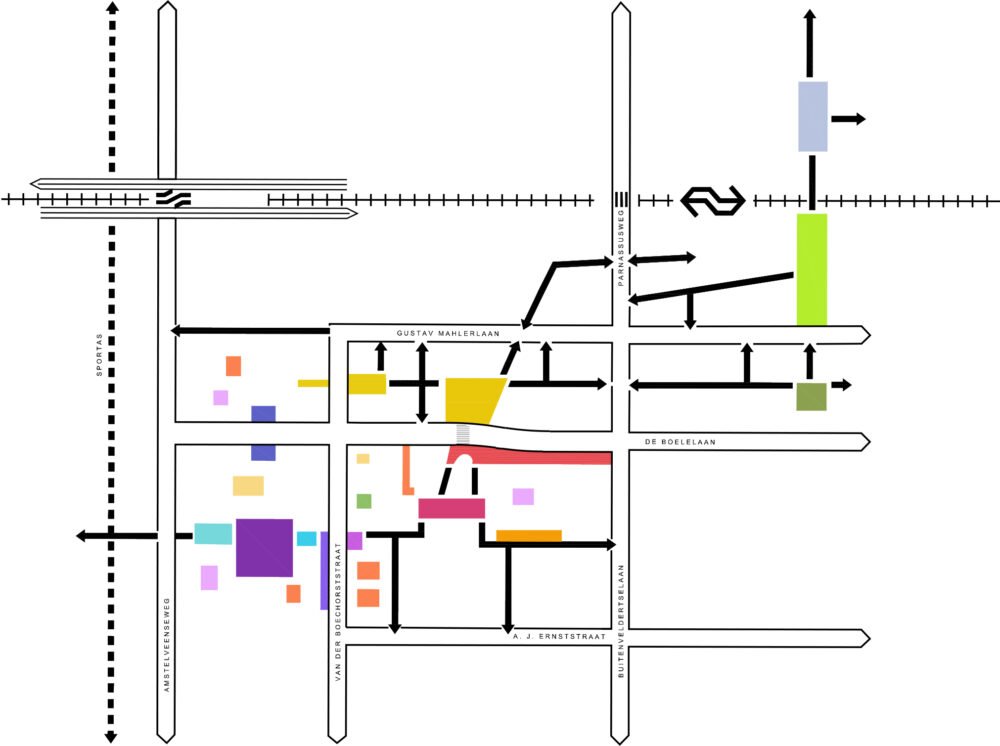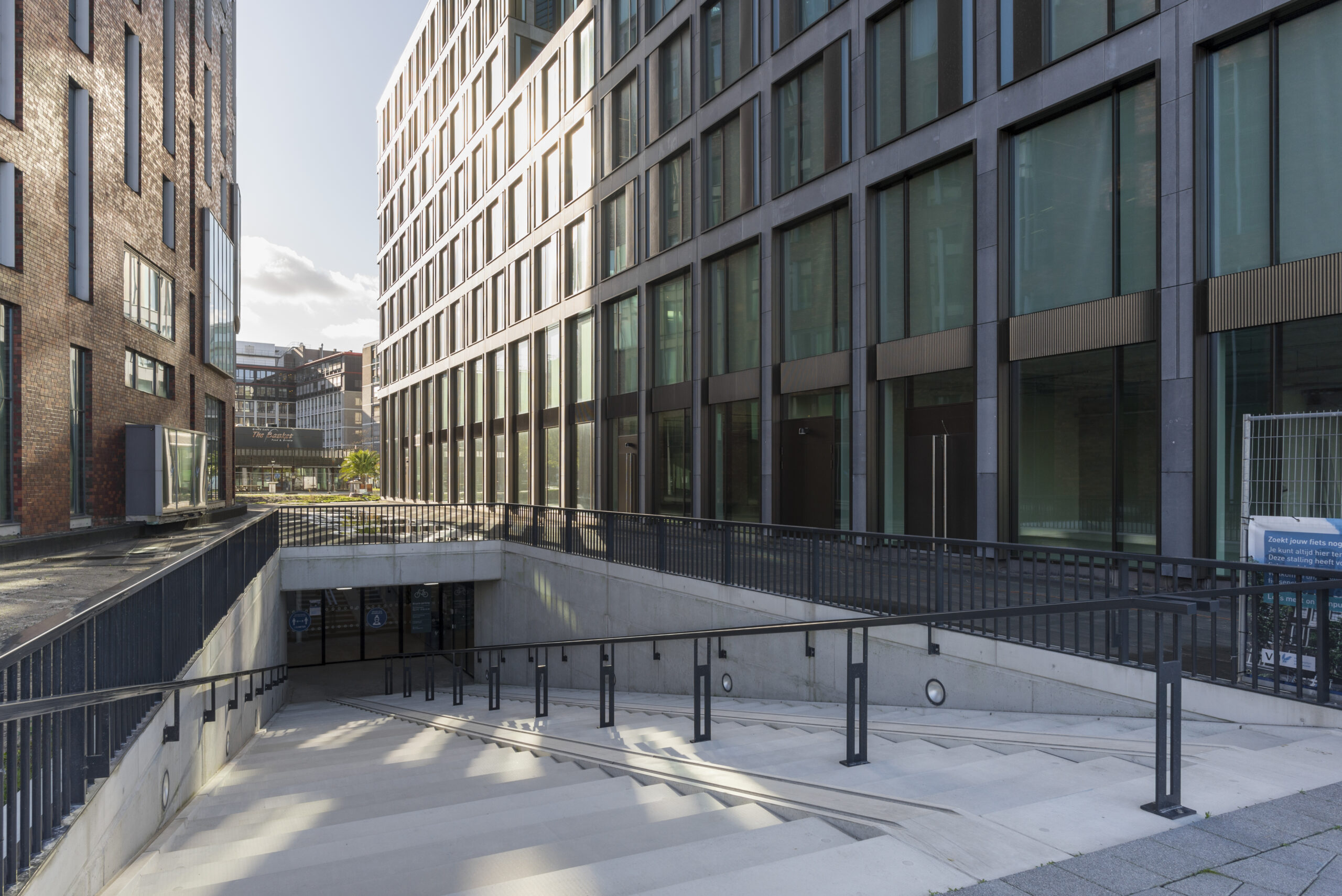Within the Southwest delta, Walcheren and the Bevelanden have a privileged position. Midden Zeeland has the freedom to move in the desired direction through a variety of large and small centers, a varied landscape and a natural connection with the mainland by highway and rail. Zeelandia is looking for the underlying vital values for the region in order to approach the future optimistically.
In addition to all the good that the Delta Works has brought, social, ecological and agricultural diversity has also been shaken. Central Zeeland is under pressure. The agricultural landscape with an egalitarian distribution of cores has over time been joined by monomaniacal domains for habitation, production or recreation. Flora and fauna are languishing due to declining water quality. The agricultural lands are suffering from salinization, which jeopardies traditional arable farming and thus the close relationship between the village centers and the surrounding lands. The experience of the seasons, the yield of hard work and the experience of divine providence gave their blessing to Zeeland’s existence for centuries. What remained is the natural emptiness that is attractive for tourism that is now flooding the region. More recently, the peripheral condition appears to be being abused for the construction of national energy supplies.
And so Central Zealand has long maintained the illusion of a vital rural region – small cores surrounded by agricultural emptiness. But insidiously, the cracks are showing themselves, like a slow disaster unfolding in Central Zealand, with infrastructural works becoming more dominant, the population aging and the villages army. Through a combination of servitude, modesty and division, the region can hardly resist the destructive patterns that are creeping up in the region.
Zeelandia chooses the future based on vital values. Based on a broad-based literature review, a conceptual framework has been developed that describes the vitality and identity of the region: community, prosperity, natural resources, food, nature and (historical) continuity. The more these elements interlock and reinforce each other, the more future-proof the region will be. (Water) safety is a basic condition for this.
For this exercise, Zeelandia chooses the ‘super delta scenario’ as a starting point. The connections with the sea are largely on the same as the major rivers, the dikes are raised, so that sea and river water are given space. Depending on ebb and flow, storms and peak discharges in the rivers, the super delta flows full and empty. A natural and dynamic wet landscape is created as the new national park of the Low Countries.
Central Zeeland is located within high sea dikes on the Superdelta. Here, new collaborations are sought to make the region more vital and resilient. No more monomaniac environments, but ‘symbiosis landscapes’ in which a different set of vitality values come together again and again. Stakeholders exchange their monofunctional positions for interaction, innovation and harmony. Symbiosis landscapes create new gradients with a balance between natural processes and human action. Old patterns become visible again and new opportunities arise. More differentiation in land use, new forms of agriculture and habitation, wide transitions between land and water, and opportunities for biodiversity set the tone. Stad aan het Sloe is the crowning glory of this. 50,000 new Zeelanders can find a home here. In a combination of housing in urban density, activity, recreation and nature development, an urban center of gravity is created on the railway. New town Stad aan het Sloe symbolizes the changes, growth and demographic shifts that Zeeland is experiencing. An example of synergy and coherence in which existing values and progress go hand in hand. Nature and culture reinforce each other. Central Zeeland is growing!
